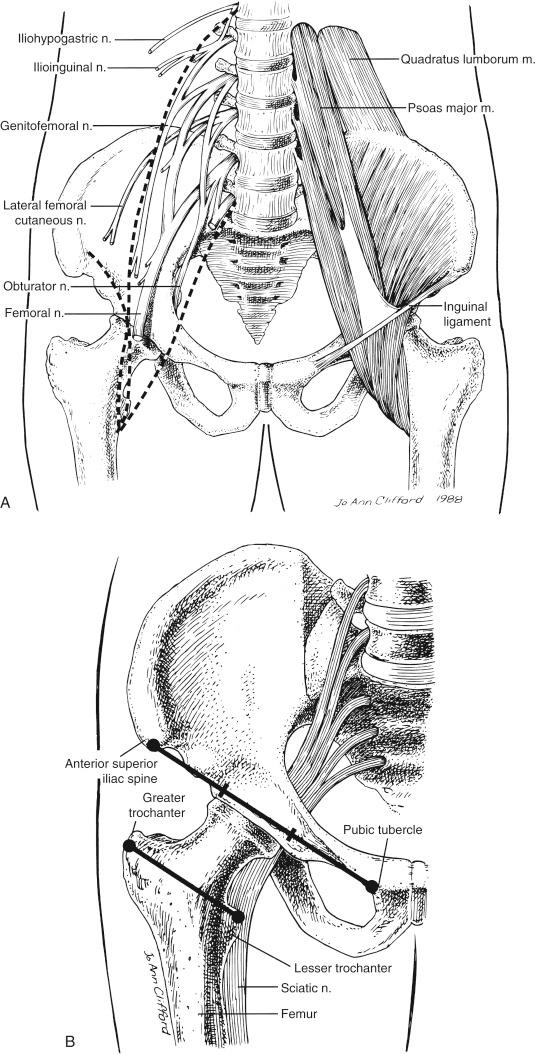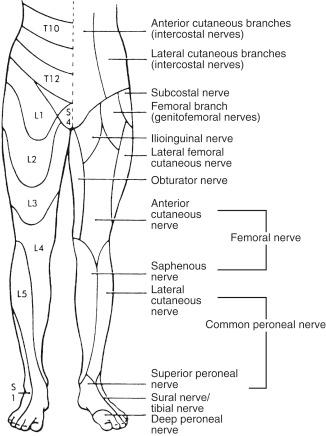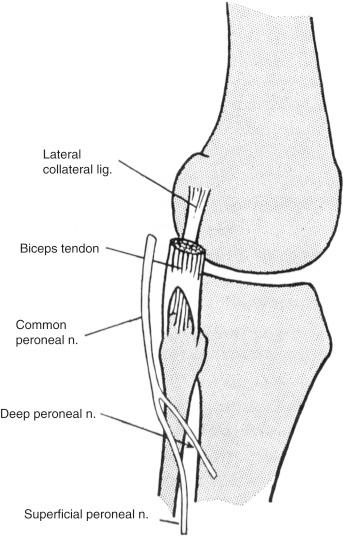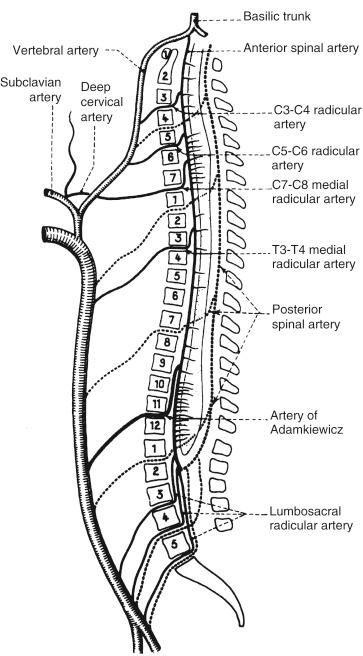Physical Address
304 North Cardinal St.
Dorchester Center, MA 02124
A 32-year-old woman, gravida 1, para 0, had uneventful epidural analgesia for labor using 0.125% bupivacaine and fentanyl 2 μg/mL. A 10-mL intravenous bolus was administered, followed by infusion of the same mixture at 10 mL per hour. Subsequently she required midforceps delivery with manual fetal version for occiput posterior vertex presentation. Before version and extraction of the infant, 20 mL of 2% lidocaine with 1:200,000 epinephrine was administered. The next day, the patient complained of sensory loss in, and inability to move, both lower extremities, and she had fecal incontinence. Two days later, she regained partial motor function and sensation in both lower extremities but still had fecal incontinence and subsequently developed urinary retention with overflow incontinence. A neurology consultation was obtained. Possible cauda equina syndrome was diagnosed on the fourth postpartum day. At 6 months, the patient still required a wheelchair but had some improvement in bowel and bladder function.
The author wishes to thank Drs. Zakowski, Vallejo, and Ramanathan for their contributions to the previous edition of this chapter.
Although many surveys have attempted to identify the incidence of neurologic complications, the true incidence can vary widely depending on the skill of the practitioner, as well as the anesthetic practices of that era. More recent data from 2006 showed the reported incidence of transient neurologic complications in obstetric patients was 1 in 6700, whereas persistent neurologic injury was quoted to be 1 in 240,000. Persistent complications usually are not due to the anesthetic itself but are more often associated with obstetric trauma during birth. In a closed claim analysis of 1005 regional anesthetics by Lee and colleagues, neuraxial block was performed in all 368 obstetric and 453 of 637 nonobstetric claims. Injuries in 51% of obstetric and 41% of nonobstetric claims were related to neuraxial block. The obstetric group had a significantly greater proportion of neuraxial claims involving transient and low-severity injuries (71%) than did the nonobstetric group (38%), yet the proportion of obstetric claims involving severe adverse outcomes (including death or permanent brain injury) was significantly lower. Among the causes of these adverse outcomes were cardiovascular collapse, respiratory arrest, and neuraxial hematoma in patients with coagulopathies. In 2009 a UK national audit showed that the highest risk appeared to be with combined spinal-epidural (CSE) and lowest with epidurals in the obstetric population.
Wong and coworkers studied 60,057 women who gave birth to live infants and later interviewed 6048 of the women. Fifty-six (0.92%) had new lower extremity peripheral nerve injuries. By logistic regression analysis, multiparity and prolonged second-stage labor were significantly associated with nerve injuries. Patients with nerve injuries spent more time in a semi-Fowler lithotomy position “pushing” than did those without such injury. The median duration of symptoms was 2 months, and injuries involved one of the lower limb peripheral nerves or the lumbosacral plexus. Thus these findings suggest that neurologic injuries related to childbirth may be related more to childbirth itself rather than the anesthetic.
When evaluating a patient with suspected neurologic complications, the answers to several questions are pertinent:
What was the duration of labor?
How long did the patient “push”?
Was the patient placed in an exaggerated lithotomy position while pushing?
Did the obstetrician use forceps to facilitate delivery?
What was the weight of the neonate?
What was the position of the presenting part (e.g., occiput posterior)?
Did the patient have a history of back problems or preexisting neurologic impairment (e.g., multiple sclerosis, human immunodeficiency virus [HIV])?
What type and amount of local anesthetic were used?
Did the patient recover sensory or motor function before the onset of new symptoms?
If a peripartum neurologic complication develops, epidural analgesia or anesthesia is often implicated. Invariably, the anesthesiologist will be consulted. There are many potential causes of postpartum neurologic injury, and epidurals are only one of them. Such neurologic injuries often result from direct trauma to the major nerve roots or trunks that supply the lower extremities and are caused by the fetal head or forceps. Direct ischemic injury to the lower spinal cord is also possible. This may occur if the fetal head compresses the ascending spinal branch of the internal iliac artery. One should also consider the possibility of a spinal hematoma (see Chapter 179 ). A neurologist must be consulted urgently when extensive neurologic deficits are first noted. Also, magnetic resonance imaging (MRI) or computed tomography scans of the spinal cord should be obtained without delay.
When calculating the risk for peripartum neurologic injuries, consideration of the anatomy involved is important. Neurologic injuries resulting from childbirth may involve branches of the lumbosacral plexus (i.e., iliohypogastric, ilioinguinal, genitofemoral, lateral femoral cutaneous, anterior tibial, femoral, obturator, and sciatic nerves). Also involved may be the pudendal nerve, derived from the sacral (S3 and S4) nerve roots, and the coccygeal plexus, derived from the S4, S5, and coccygeal nerve roots. Occasionally, extensive injuries may result in the cauda equina syndrome. Involvement of the major plexuses (lumbar and sacral) may cause such extensive injuries, which can take weeks or months to resolve.
Branches of the lumbar plexus or sacral plexus ( Fig. 162.1 ) include the sciatic nerve (which contains the common peroneal and tibial nerves), and these may be compressed by the fetal head as it crosses the posterior pelvic brim during birth. Such injuries are unilateral in 75% of cases and bilateral in the rest. Compression injuries are more common in nulliparous parturients with a platypellic pelvis, large fetus, cephalopelvic disproportion, vertex presentation, or forceps delivery. These injuries may involve multiple nerve root levels or present as injuries to the femoral or obturator nerves, with sensory impairment in the L4–L5 dermatomes. Table 162.1 describes some common peripheral nerve injuries in parturients, and Fig. 162.2 illustrates the dermatomes subserved by branches of the lumbosacral plexus.

| Nerve | Nerve Roots | Possible Mechanism | Clinical Picture |
|---|---|---|---|
| Lumbosacral trunk | L4–L5, S1 | Forceps injury | Footdrop; quadriceps and adductors affected |
| Femoral nerve | L2–L4 | Fetal head; retractors during cesarean section | Quadriceps weakness; weak hip flexion; absent patellar reflex; sensory impairment in thigh and calf |
| Lateral femoral cutaneous nerve | L2–L3 | Stirrups; prolonged and exaggerated lithotomy position while pushing | Hypalgesia in anterolateral aspect of thigh |
| Common peroneal nerve (sciatic) a | L4–S2 | Stirrups or bedside rails | Footdrop; hypesthesia in lateral calf and anterior aspect of foot |
| Tibial nerve (sciatic) | L4–S2 | Stirrups or bedside rails | Footdrop (muscular branches innervate gastrocnemius and soleus muscles); medial (sural) branches lead to sensory loss in lower leg |
| Obturator nerve | L2–L4 | Fetal head | Weakness on thigh adduction; reduced sensation in medial aspect of thigh |
a Owing to its superficial nature, one of the more frequently injured nerves.

With regard to the mechanisms for specific nerve injuries (see Table 162.1 ), multiple sclerosis relapses often contribute to lateral femoral cutaneous nerve injuries. Numbness of the anterior aspect of the thigh associated with lateral femoral cutaneous nerve injury is termed meralgia paresthetica. This nerve can also be injured by hyperextended lithotomy positioning, pressure from the fetal head, or improper surgical traction during cesarean delivery. When the femoral nerve is injured, hip flexion and knee extension become difficult. Injury is caused by active flexion of the hips during the second stage of labor, leading to compression of the nerve by the inguinal ligament. Therefore extreme flexion of the hip during “pushing” should be avoided. The legs should be rested between labor contractions and pushing. Also, use of a “squatting bar” to keep the hips hyperflexed during the second stage of labor may cause injury to the femoral nerve. Femoral nerve injury may also be caused by lumbosacral plexus compression by the fetal head.
The adductor magnus muscle receives dual innervation from the obturator and sciatic nerves. If the obturator nerve is involved, thigh abduction weakens, with sensory loss along the medial aspect of the thigh. The sciatic nerve is the largest peripheral nerve in the body. An important branch is the common peroneal nerve, which supplies both motor and sensory innervation to the leg. This nerve winds around the neck of the fibula, where it is the only manually palpable nerve in the lower extremity ( Fig. 162.3 ), making it vulnerable to injury, especially by stirrups. Such injury leads to paralysis of the ankle and foot, resulting in footdrop and inversion, with sensory impairment of the anterior aspect of the foot.

Occasionally, inflammation or spasm of the piriformis muscle (caused by prolonged sitting or extensive weight bearing during pregnancy) may cause sciatic nerve irritation. When the thigh is extended and rotated medially, gluteal pain radiating to the knee occurs.
Blood supply to the spinal cord is often precarious and subject to important variations ( Fig. 162.4 ). Damage to the spinal cord, can occur if the blood supply is interrupted. One anterior and two posterior spinal arteries supply the cord. At certain sites along the spinal cord, there are a number of reinforcing inputs from other arteries, one of which is the artery of Adamkiewicz (or the arteria radicularis magna); this usually arises from the aorta at T9 but can arise anywhere between T9 and T12. Arteries that supply the lower spinal cord usually originate from the left side from one or two of the thoracolumbar segmental arteries (T9 to L2). Thus injury to these arteries may be implicated in injuries to the lower portion of the spinal cord. In about 15% of cases, the artery of Adamkiewicz originates at the T5 level. If so, the major part of the blood supply to the lower spinal cord is provided by a lumbar branch from the internal iliac artery, which lies in front of the sacral ala and enters the spinal cord via L5–S1 intervertebral foramina. This branch can be compressed by the fetal head, leading to ischemia of the conus medullaris. Additionally, compression in the artery of Adamkiewicz due to a stiff epidural catheter in the same intervertebral foramen may impair blood supply to the spinal cord, leading to symptoms of anterior spinal artery syndrome. Acute spinal cord ischemia is often undetectable with conventional MRI. Echoplanar diffusion-weighted MRI is used to diagnose acute spinal cord ischemia, as well as epidural hematoma or abscess.

Become a Clinical Tree membership for Full access and enjoy Unlimited articles
If you are a member. Log in here